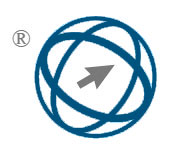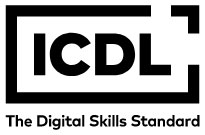Fetal Health Risk Classification using Important Feature Selection and CART Model on Cardiotocography Data
Abstract
Full Text:
PDFReferences
E. L. Haksari, M. Hakimi, and D. Ismail, “Neonatal mortality in small for gestational age infants based on reference local newborn curve at secondary and tertiary hospitals in Indonesia,” BMC Pediatr, vol. 23, no. 1, p. 214, May 2023, doi: 10.1186/s12887-023-04023-z.
K. Barnova, R. Martinek, R. Vilimkova Kahankova, R. Jaros, V. Snasel, and S. Mirjalili, “Artificial Intelligence and Machine Learning in Electronic Fetal Monitoring,” Archives of Computational Methods in Engineering, vol. 31, no. 5, pp. 2557–2588, Jul. 2024, doi: 10.1007/s11831-023-10055-6.
J. V. Y. Chuatak, E. R. C. Comentan, R. L. H. G. Moreno, R. K. C. Billones, R. G. Baldovino, and J. C. V. Puno, “A decision tree-based classification of fetal health using cardiotocograms,” 2023, p. 020003. doi: 10.1063/5.0111194.
H. Sahin and A. Subasi, “Classification of the cardiotocogram data for anticipation of fetal risks using machine learning techniques,” Appl Soft Comput, vol. 33, pp. 231–238, Aug. 2015, doi: 10.1016/j.asoc.2015.04.038.
E. Yılmaz, “Fetal State Assessment from Cardiotocogram Data Using Artificial Neural Networks,” J Med Biol Eng, vol. 36, no. 6, pp. 820–832, Dec. 2016, doi: 10.1007/s40846-016-0191-3.
Y. Salini, S. N. Mohanty, J. V. N. Ramesh, M. Yang, and M. M. V. Chalapathi, “Cardiotocography Data Analysis for Fetal Health Classification Using Machine Learning Models,” IEEE Access, vol. 12, pp. 26005–26022, 2024, doi: 10.1109/ACCESS.2024.3364755.
M. Ramla, S. Sangeetha, and S. Nickolas, “Fetal Health State Monitoring Using Decision Tree Classifier from Cardiotocography Measurements,” in 2018 Second International Conference on Intelligent Computing and Control Systems (ICICCS), IEEE, Jun. 2018, pp. 1799–1803. doi: 10.1109/ICCONS.2018.8663047.
D. Campos and J. Bernardes, “Cardiotocography [Dataset],” UCI Machine Learning Repository.
F. Mesa, R. Ospina-Ospina, and D. Devia-Narvaez, “Comparison of Support Vector Machines and Classification and Regression Tree Classifiers on the Iris Data Set,” Journal of Southwest Jiaotong University, vol. 58, no. 2, 2023.
J. Josse, J. M. Chen, N. Prost, G. Varoquaux, and E. Scornet, “On the consistency of supervised learning with missing values,” Statistical Papers, Sep. 2024, doi: 10.1007/s00362-024-01550-4.
L. Rokach and O. Maimon, “Decision Trees,” in Data Mining and Knowledge Discovery Handbook, New York: Springer-Verlag, 2005, pp. 165–192. doi: 10.1007/0-387-25465-X_9.
J. R. Quinlan, “Induction of decision trees,” Mach Learn, vol. 1, no. 1, pp. 81–106, Mar. 1986, doi: 10.1007/BF00116251.
S. Chanmee and K. Kesorn, “Semantic decision Trees: A new learning system for the ID3-Based algorithm using a knowledge base,” Advanced Engineering Informatics, vol. 58, p. 102156, Oct. 2023, doi: 10.1016/j.aei.2023.102156.
R. Weber, “Fuzzy-ID3: A Class of Methods for Automatic Knowledge Acquisition,” Proceedings of the 2nd International Conference on Fuzzy Logic and Neural Networks, pp. 265–268, Jul. 1992.
A. Agarwal, K. Jain, and R. K. Yadav, “A mathematical model based on modified ID3 algorithm for healthcare diagnostics model,” International Journal of System Assurance Engineering and Management, vol. 14, no. 6, pp. 2376–2386, Dec. 2023, doi: 10.1007/s13198-023-02086-w.
Y.-C. Chiang, Y.-C. Hsieh, L.-C. Lu, and S.-Y. Ou, “Prediction of Diagnosis-Related Groups for Appendectomy Patients Using C4.5 and Neural Network,” Healthcare, vol. 11, no. 11, p. 1598, May 2023, doi: 10.3390/healthcare11111598.
M. Ozcan and S. Peker, “A classification and regression tree algorithm for heart disease modeling and prediction,” Healthcare Analytics, vol. 3, p. 100130, Nov. 2023, doi: 10.1016/j.health.2022.100130.
L. Breiman, J. H. Friedman, R. A. Olshen, and C. J. Stone, Classification And Regression Trees. Routledge, 2017. doi: 10.1201/9781315139470.
M. M. Ghiasi and A. H. Mohammadi, “Application of decision tree learning in modelling CO 2 equilibrium absorption in ionic liquids,” J Mol Liq, vol. 242, pp. 594–605, Sep. 2017, doi: 10.1016/j.molliq.2017.05.016.
H. Yarveicy, M. M. Ghiasi, and A. H. Mohammadi, “Performance evaluation of the machine learning approaches in modeling of CO 2 equilibrium absorption in Piperazine aqueous solution,” J Mol Liq, vol. 255, pp. 375–383, Apr. 2018, doi: 10.1016/j.molliq.2017.11.156.
A. R. Kadhim, R. S. Khudeyer, and M. Alabbas, “Facial Sentiment Analysis Using Convolutional Neural Network and Fuzzy Systems,” Informatica, vol. 48, no. 12, Sep. 2024, doi: 10.31449/inf.v48i12.6151.
C. Pal, S. Das, A. Akuli, S. K. Adhikari, and A. Dey, “Cocoa-Net: Performance Analysis on Classification of Cocoa Beans Using Structural Image Feature,” Informatica, vol. 48, no. 12, Sep. 2024, doi: 10.31449/inf.v48i12.5762.
X. Ying, “An Overview of Overfitting and its Solutions,” J Phys Conf Ser, vol. 1168, no. 2, p. 022022, Feb. 2019, doi: 10.1088/1742-6596/1168/2/022022.
A. Ilham, A. Kindarto, A. Kareem Oleiwi, and L. Khikmah, “CFCM-SMOTE: A Robust Fetal Health Classification to Improve Precision Modelling in Multi-Class Scenarios,” International Journal of Computing and Digital Systems, vol. 15, no. 1, pp. 1–9, 2024.
A. Ilham, R. Satria Wahono, C. Supriyanto, and A. Wijaya, “U-control Chart Based Differential Evolution Clustering for Determining the Number of Cluster in k -Means,” International Journal of Intelligent Engineering and Systems, vol. 12, no. 4, pp. 306–316, Aug. 2019, doi: 10.22266/ijies2019.0831.28.
DOI: https://doi.org/10.31449/inf.v49i1.5658

This work is licensed under a Creative Commons Attribution 3.0 License.









